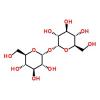Trehalose doesn't spike insuline and it doesn't promote glycation, so it should be diabetic safe.
All the liposomal delivery is doing is shielding the trehalose from trehalase enzyme in the gut so that it passes into the bloodstream without being broken down into two sucrose molecules. I also believe it will to an extent shield it from trehalase digestion in the liver. It really might be an ideal way to deliver trehalose to the vascular endothelium to help reverse atherosclerosis. The only question I have about liposomal delivery is how well it works for other applications like degenerative brain diseases like Huntington's, Parkison's, and Alzheimer's. Certainly those liposomes are not going to cross the BBB, but I do think there is a reasonable possibility that ultimately the liposome will disgorge it's trehalose payload and some of that will make it across the BBB, better than straight oral ingestion in any case. It would be nice to get someone with some knowledge on the pharmacokinetics of liposomal delivery vis-à-vis the BBB to comment on those aspects.



















































